Read Part II in our series on IDW’s Final Frontier adventures in the Kelvin Timeline.
Boldly going into the Final Frontier would not occur as quickly as some Star Trek fans might have wanted when IDW launched its ongoing Star Trek series five years ago. The first two story arcs actually updated classic episodes from The Original Series with a Kelvin Timeline twist. Still, the familiar might have helped fans against the new timeline to give the comic series a chance, while also allowing the new audience brought in by the 2009 film to also connect with the material.
Adapting “Where No Man Has Gone Before” and “Galileo Seven”, Mike Johnson began his five-year stint in Starfleet making subtle changes to the original screenplays of both episodes to reflect the new personalities established by the comic’s Creative Consultant, Roberto Orci, in the 2009 film. Johnson is able to change events just enough to stay true to each episode’s themes while also adding new twists and turns.
Interesting changes appear in Star Trek issues #1-2, as Gary Mitchell and Kelso are present, although they are now Sulu and Chekov’s backups. Kirk still has a long history from the Academy with the duo, which is why they are onboard the Enterprise. One character notable in their exclusion is Dehner, played magnificently in the original episode by Sally Kellerman. Her absence, however, is addressed, and Johnson also includes a reference to the first Delta Vega planet encountered in the Kelvin Timeline.
Too often the dialogue of the comic was taken verbatim from the corresponding Original Series episode. Although the comics are set in the Kelvin timeline, I sometimes found myself reading the dialogue as if it were spoken by the Original Series crew. This can be a bit bewildering and potentially cause the reader to be knocked out of the story.
There are some unique changes, however, especially Kirk and Mitchell’s final confrontation on Delta Vega, now sans Dehner and her last-minute assistance. Still, the new ending continues to establish the importance of a new relationship stressed in 2009’s Star Trek.
“Galileo Seven” is a classic episode in which Spock must assume command, and while he remains true to his logical Vulcan upbringing in his decision making, the effects on the emotional human crew present a challenge to his authority. This one sticks closely to the original script, complete with the irritating Federation representative insisting on completing the mission. Rand makes her first appearance in the new timeline in the issue, and Johnson throws in a nice little surprise that should make fans of a certain relationship happy.
Illustrating issues 1-4 is Canadian artist Stephen Molnar with John Rauch on inks. Molnar captures the crew’s likenesses well, although some of the characters might appear to be a bit more comic booky, as in the case of Scotty as the issue opens. Sadly, issue four sees Molnar only provide layouts as Joe Phillips completes the storytelling. The body movements and likenesses are not as strong, which could be a detriment in the early run of a series.
All in all, it is an interesting debut for IDW’s first ongoing Star Trek series, deciding to go where this crew had gone before in introducing the Kelvin Timeline to “original” comic stories. Sadly, the next eight issues of the arc would continue to adapt original episodes, meaning readers would not experience brand-new Kelvin Timeline stories for a year after the series launched.



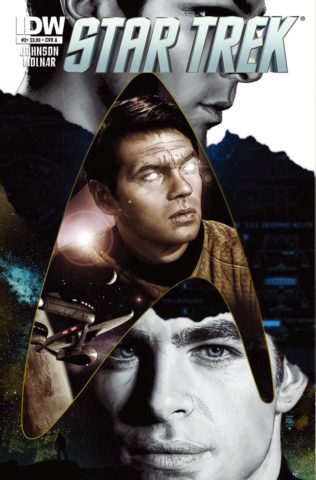

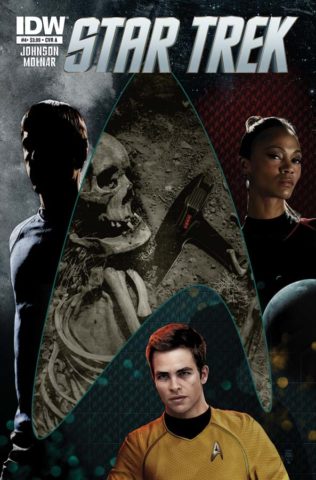
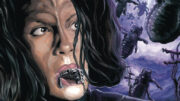
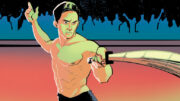
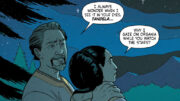
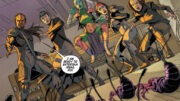
I enjoyed the comics, read them up to After Darkness then got behind.
Have to hand it to IDW, this comic has been going for years now. They must be doing something right.
The comic is cool but it isn’t canon. When Kirk told Pike in Into Darkness that he had not lost a crew member and crew members died in the comic that pretty much confirmed it. The Marvel Star Wars comics are considered canon and they keep the continuity tightly controlled. It would be cool if Paramount and IDW developed a tightly controlled continuity with the comic. I remember in Countdown there was this whole back story about Spock and Nero having a relationship and then in the film Spock said ‘He called himself Nero’. I was like if he knew him why would he say that? Wouldn’t he say I knew him, it was Nero, we worked to save Romulus’? A fan pointed out the whole “Mudd” line from Into Darkness. I would bet that was written before the comic and could mean anything. I hated the whole “Robert April” thing.
Obviously I have too much time on my hands. Anyway, it would be cool if they could develop a comic that was in synergy with the film universe. Some of the ideas from that Khan comic should have been in the film.